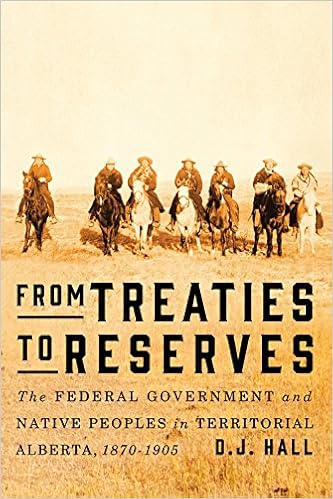Oops.
My apologies but I missed the April Book Tuesday and almost the May one too.
Better late than never I suppose. 😕
Enjoy
Victorian Society of Alberta
From Treaties to reserves
by D.J.Hall

Though some believe that the Indian treaties of the 1870s achieved a
unity of purpose between the Canadian government and First Nations, in
From Treaties to Reserves D.J. Hall asserts that - as a result of
profound cultural differences - each side interpreted the negotiations
differently, leading to conflict and an acute sense of betrayal when
neither group accomplished what the other had asked. Hall explores the
original intentions behind the government's policies, illustrates their
attempts at cooperation, and clarifies their actions. While the
government believed that the Aboriginal peoples of what is now southern
and central Alberta desired rapid change, the First Nations, in
contrast, believed that the government was committed to supporting the
preservation of their culture while they adapted to change. Government
policies intended to motivate backfired, leading instead to poverty,
starvation, and cultural restriction. Many policies were also culturally
insensitive, revealing misconceptions of Aboriginal people as lazy and
over-dependent on government rations. Yet the first two decades of
reserve life still witnessed most First Nations people participating in
reserve economies, many of the first generation of reserve-born children
graduated from schools with some improved ability to cope with reserve
life, and there was also more positive cooperation between government
and First Nations people than is commonly acknowledged. The Indian
treaties of the 1870s meant very different things to government
officials and First Nations. Rethinking the interaction between the two
groups, From Treaties to Reserves elucidates the complexities of this
relationship.
The Victorian City: Everyday Life in Dickens' London Paperback
by Judith Flanders
The 19th century was a time of unprecedented transformation, and nowhere
was this more apparent than on the streets of London. In only a few
decades, London grew from a Regency town to the biggest city the world
had ever seen, with more than 6.5 million people and railways,
street-lighting, and new buildings at every turn. Charles Dickens
obsessively walked London's streets, recording its pleasures,
curiosities and cruelties. Now, Judith Flanders follows in his
footsteps, leading us through the markets, transport systems, sewers,
slums, cemeteries, gin palaces, and entertainment emporia of Dickens'
London.
The Victorian City is a revelatory portrait of everyday
life on the streets, bringing to life the Victorian capital in all its
variety, vibrancy, and squalor. No one who reads it will view London in
the same light again.


No comments:
Post a Comment